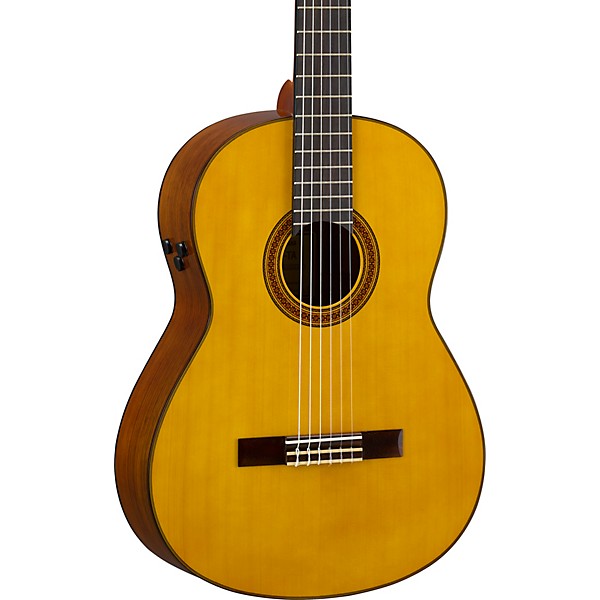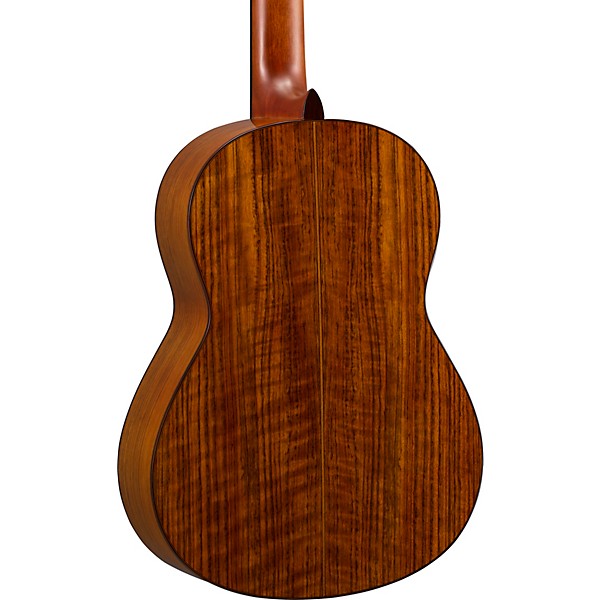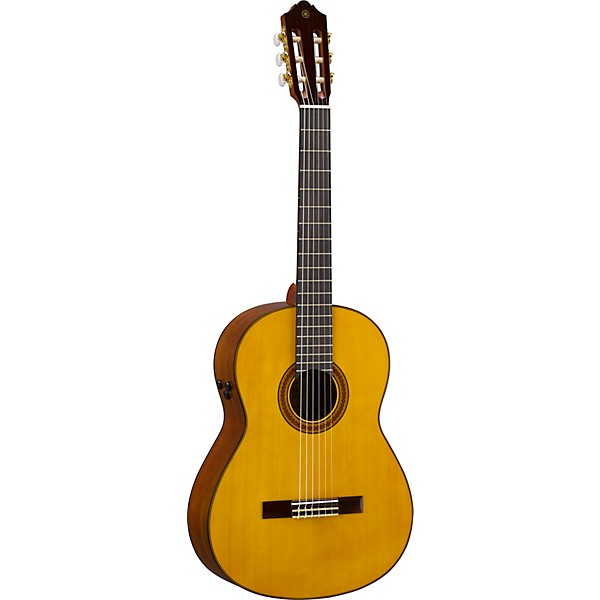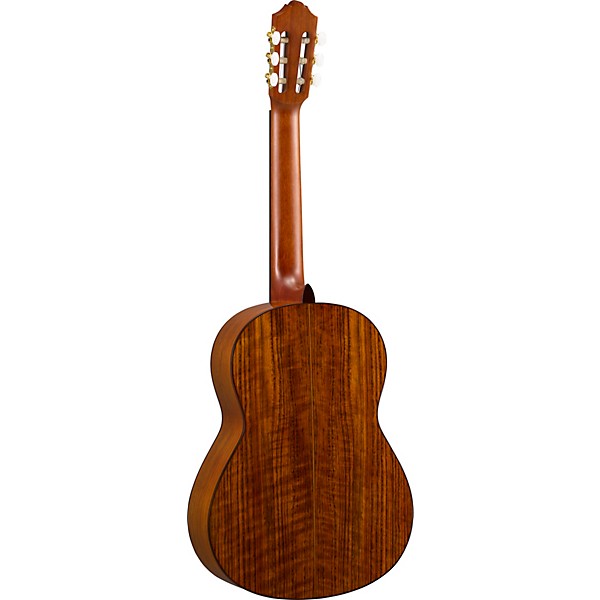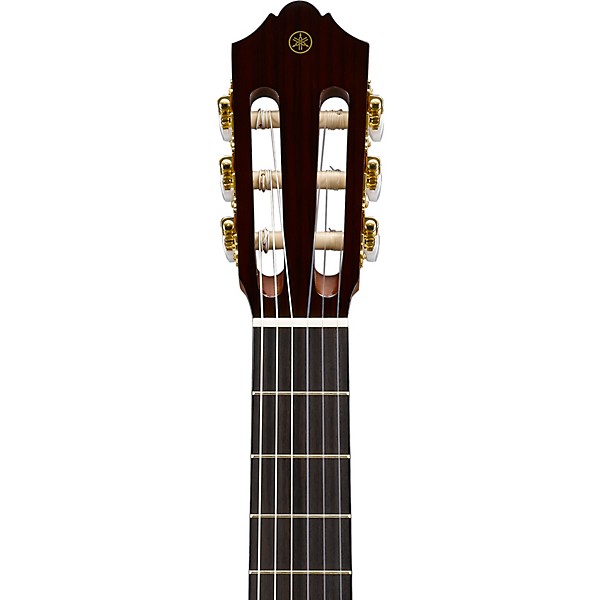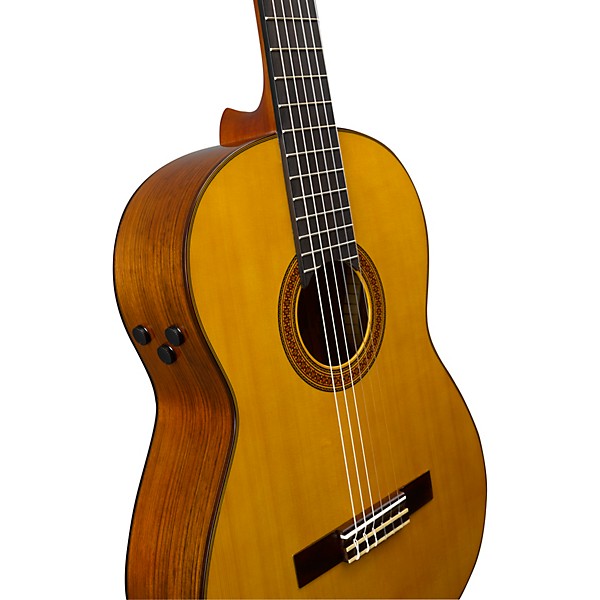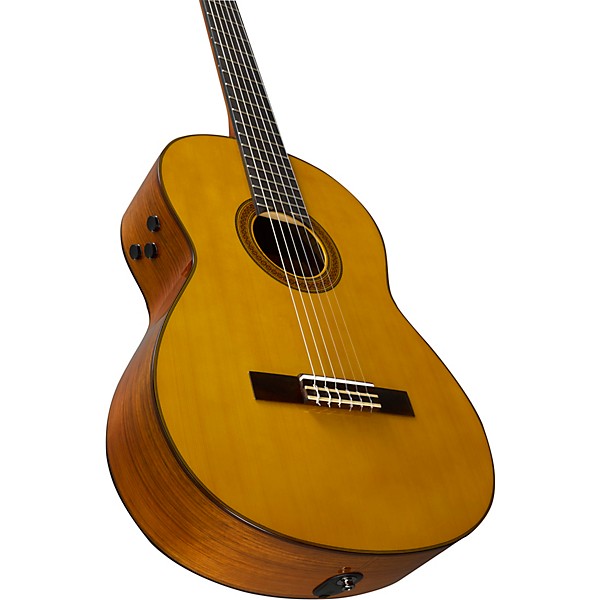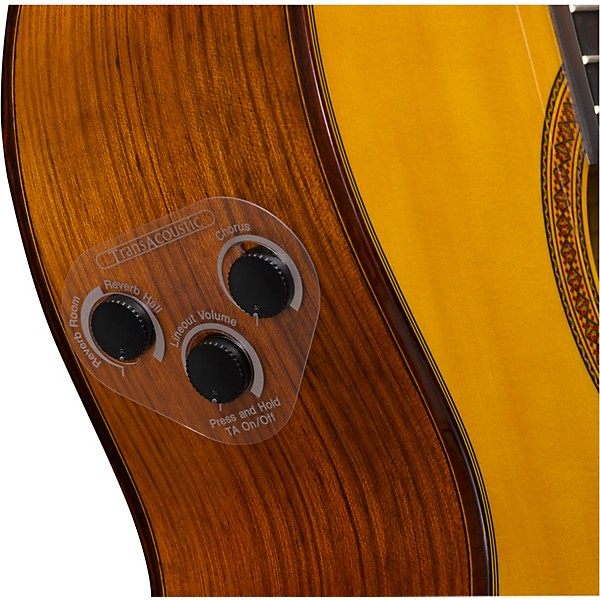- Popular Brands
Yamaha CG-TA TransAcoustic Nylon-String Acoustic-Electric Guitar Gloss Natural
Videos (1)
View All

Yamaha CG-TA Classical TransAcoustic Nylon String Guitar | Demo

 Description
Description
Yamaha's groundbreaking CG-TA TransAcoustic nylon-string acoustic-electric guitar provides an immersive experience that renews inspiration and spawns creativity. The CG-TA features built-in reverb and chorus effects that don't require any external amplification, just the guitar itself. The CG-TA TransAcoustic guitar gives musicians and songwriters an exciting new way to compose and perform.
Innovative Actuator Technology Provides Authentic Reverb and Chorus
At the heart of the CG-TA's innovative design is an integrated actuator that creates authentic reverb and chorus sounds inside the guitar body. As the strings vibrate, the actuator vibrates in response and transmits those vibrations to the guitar body and the air surrounding it. The result is lush, spacious reverb and shimmering chorus you can feel and hear, without needing any external effects.
Simple Yet Intuitive Controls for Adjusting Effects and Volume
Despite the complex technology inside, the CG-TA is designed to be simple to operate. Three unobtrusive knobs let you easily adjust the reverb, chorus and volume levels. The reverb control transitions smoothly from a warm, intimate room sound to a spacious hall ambience. The chorus adds subtle motion and thickness, enriching the guitar's natural tone. When plugged in, the volume control adjusts the line out level.
Premium Tonewoods and Components Provide a Familiar yet Inspiring Playability
The CG-TA's solid Engelmann spruce top, and ovangkol back and sides, produce a rich, balanced tone that complements the built-in effects beautifully. Its nato neck and rosewood fingerboard provide a familiar feel for any guitarist. The CG-TA gives you an inspiring creative tool built on a foundation of premium tonewoods and high-quality components.
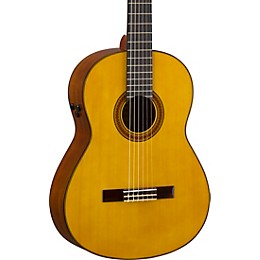

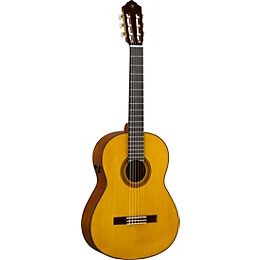
 Features
Features
- Yamaha proprietary TransAcoustic technology with built-in hall reverb, room reverb and chorus
- Solid Engelmann spruce top, ovangkol back and sides
- Nato neck, rosewood fingerboard and bridge
- System 70 TransAcoustic electronics with SRT piezo pickup
- Natural gloss finish
 Specs
Specs
- Body type: Classical
- Cutaway: No
- Top wood: Solid Englemann spruce
- Back and sides: Ovangkol
- Bracing pattern: Not specified
- Body finish: Gloss
- Orientation: Right handed
- Nut width: 2.063"
- Fingerboard: Rosewood
- Neck wood: Nato
- Scale length: 25.6"
- Number of frets: 19
- Neck finish: Matte
- Pickup/preamp: Yes
- Brand: Yamaha
- Configuration: Behind-the-saddle piezo
- Preamp EQ: No
- Feedback filter: No
- Tuner: No
- Headstock overlay: Not specified
- Tuning machines: Die-cast chrome
- Bridge: Rosewood
- Saddle and nut: Urea
- Number of strings: 6
- Special features:
- Case: Sold separately
- Accessories: None
- Country of origin: China
Featured Articles
 Reviews
Reviews
4.82
11 Reviews
100%
of respondents would recommend this to a friend
- Gigging1
- Student practice1
- Studio recording1
- Remains powered if plugged-in1
- Classical guitarist1
- Fingerstyle guitarist1
- Clean build1
- Excellent effects1
- Very good tone unplugged1
Reviewed by 11 customers
Definitely worth it
submitted2 months ago
byLUCKY
fromMiami
Picked this up after upgrading from a Cordoba. It has a pleasant tone, easy to play and with the reverb can give you nice electric acoustics. Obviously it's not a concert quality guitar, but for small gigs or taking it to any other events, it's definitely worth the price. I would highly recommend it to anyone who wants to upgrade from beginner to intermediate or even advanced playing.
C162 with effects
submitted9 months ago
byPhillip
fromMinneapolis
I recently bought a Yamaha CG-TA from a local store after much deliberation. I am in the process of thinning out my herd of musical instruments and I traded in two classical guitars and a banjo for this one. I have been reading about the CG-TA for a while and was intrigued. I was resolved to play the guitar first *before* purchasing. Novel idea, huh? On of the reasons I traded in one of my classical guitars was that it didn't meet my expectations/hopes since I hadn't played it before ordering. Oh well. So I spent a couple of days visiting the local GC store and playing their floor model before buying one. Here's my take on the Yamaha CG-TA: GUITAR It's basically a spruce top C162 (there is also a cedar top C162). It's a sound mid-range classical. Nothing particularly outstanding, but it is nicely made and has a reasonable tonal quality. It is not a concert-grade instrument, but then it's not a concert-grade price. I certainly viable for an early to intermediate player. It is nicely made, as I would expect from Yamaha. Not a luthier piece, but well finished. The frets are well dressed and the action is ok, though I may lower it a tad or perhaps replace the high tension strings with medium tension. So, summary: it is good quality guitar at a slightly high price. The price markup is, obviously, due to the electronics. ELECTRONICS The "TA" stands for "Trans Acoustic" an internal system that, when activated, resonates with the played strings. There are two reverb dials allowing you to dial in a "hall" reverb or a "room" reverb. The "Hall" setting does seriously over-process at high levels, so I wouldn't do that. The "Room" setting is more restrained as one would expect. The Chorus knob adds a chorus "shimmer" to the music. Any of these effects could be achieved using a mic or acoustic pickup fed through the appropriate effects box, and into an amp/speaker setup. Many amps already have these effects built in (my Marshall AS50 has such). What the CG-TA allows is access to these effects sans pickup, mic, or amp. So, when playing the CG-TA, you simply switch it on (by long-pressing the volume knob), dialing in the Hall/Room reverb and the Chorus effect and off you go. BTW the effects do not actually amplify the sound much. They do a little bit, but it's a side effect of, well, the effects. The guitar has a 1/4" line-out that can be fed into an amp, and the volume knob controls that output. USING THE EFFECTS Definitely less is more. I play classical guitar to get a classical guitar sound. In general effects are really not the point, eh? For example I almost never use the effects in the Marshall AS50 when fed through a mic. The sound just doesn't seem… right. Right? If I wanted an overdrive shredding sound, I'd play electric. But with the CG-TA, a little bit of either or both reverb and chorus really makes the guitar stand out. I typically dial in about 1/8th of the chorus range and about 1/4 of the reverb, with maybe 1/3 of the Room reverb. The sonic effect is of a bigger, more spacious guitar sound, without overwhelming the tone quality. I find that too much effect is too much. Especially, a high level of the Hall reverb causes, a D-string F-F# note to "boom", probably because that's the air resonance of the body. It's not a wolf tone, more a noticeably louder version of the note. SUMMARY Overall, I really like this guitar, which is why I bought it, of course. Especially when practicing, or playing in a small setting where setting up an amp isn't a good solution, it really stands out as a unique instrument. PS: As I was playing the CG-TA and deciding on buying it, I picked up a Cordoba Flamenco (the GK Studio) guitar priced around the same level. Don't do this. The Cordoba had a noticeable better tone and caused me much agonizing over which to get. I finally settled on the Yamaha because (a) Effects (b) the Cordoba has a narrower nut (which might appeal to people as a crossover from steel string acoustics or electric guitars), (c) the body of the Cordoba was a little thinner than the CG-TA and gave off a little less volume. The moral: once you've decided on what you want to buy be careful about checking out other guitars.
Terrific Value
submitteda year ago
byRobert
fromSouth Carolina
First off, it doesn't sound like a concert classical, but nothing this price would. The voice is midrange-forward and punchy, and with the laminated sides it's missing some sustain. With that said, it's absolutely terrific for comping jazz standards along with my vocals. I've got Gc22 and 32, and sometimes they're a bit too dark. All the things that make this fall short as a classical make it sing for country, folk, or jazz that's on the pop side, not bop side. The effects are great for adding texture.works great through a PA with no feedback -- if you dial in the PA eq. It has slightly high action like all Yamaha gc and cg guitars do, but I don't mind. You get used to iequipment. For 700, there's really nothing to disagree with. Typical high value Yamaha.
Great guitar
Verified Buyer
submitteda year ago
byPremtim
fromNew York
Submitted as part of a sweepstakes
Wonderful guitar to practice and play. The reverb is so good you feel like playing in a big hall. The only thing I don't like is sometimes it makes noices inside I think the transacoustic sistem the motherboard inside vibrates and it touches somewhere so you hear some buzzes.
There is something magical about this guitar
submitted2 years ago
byPete
fromConcord, CA
The first thing I want to say about my new Yamaha CG-TA ("TransAccoustic") guitar is that it is an excellent sounding classical-nylon string guitar, with good volume if desired, and with well-balanced bass, mids and high tones, even when played naturally without any "TransAccoustic" effects turned on. It is easy and fun to play, it came with good action as built, good intonation, very smooth and accurate tuning, with a comfortable neck profile and feel. And it retains all its good qualities and sound while capo-ing down several frets. It is an attractive, well-built guitar that just feels, looks and sounds good. I've played mostly classical guitar, casually, for my own enjoyment and for small groups, for over 50 years. My playing consists mostly of strumming chords or simple finger picks to accompany myself, or a group of friends, while singing. I frequently use a capo up to the 4th fret. I have played guitars that literally cost twice as much that didn't sound as good and weren't as easy feeling as this one. It's hard to explain, but I find there is just something particularly pleasing about the feel and sound of this guitar. When choosing this instrument I played around with it in the store for about two hours, fell in love with it, all the while never realizing it had this extra feature called TransAccoustic, which I had never heard of. I saw it had a plug for amp connection, and three inconspicuous knobs on top of the body, so assumed it could also be connected to an amp and played as an electric. But that wasn't my priority when I bought it. And, I had no idea about its capability to add varying amounts of reverb and chorus effects to its sound WITH NO EXTERNAL AMP INVOLVED, powered internally with a small hidden circuit board, two AA batteries, and an internal small device attached inside the body (no speaker) that uses the natural vibrations of the guitar wood to add the sounds of the effects to the natural vibrations of the strings! So as good and fun to play as this guitar is naturally, without being amplified or without the internal effects being turned on, the real magic happens when you add a little of its internal TransAccoustic reverb or chorus - the TA part! It's hard to explain. The quality of the effects I believe is excellent even when turned way up, but I prefer a natural, classical, non-electric sound. So, when I use these effects, I turn on the reverb knob just a little – about 1/4 circle. Rather than produce an electronic sound, this transforms this free standing guitar into a very live sounding, high quality acoustic instrument, with no feel of being an electric guitar. If you are playing in a somewhat acoustically dead room (small, carpeted etc.) it results in the guitar sounding like you are in a live space with hard surfaces and good acoustics – like a stairwell or tiled bathroom. The effects knobs are sensitive, so you can easily add just a touch of the TA effects, or a whole lot. I prefer just a touch, which I end up using most of the time.
A lot more fun than your typical classical guitar
submitted3 years ago
byHans
fromMonterey, CA
This is the CG162S but with Yamaha's Transacoustic system. Room and Hall reverb effects are excellent. Chorus effect may be of interest to fingerstylists. Tone is very good unplugged. Well-built. Battery will drain if you leave cable plugged-in. Factory action was high for me.
 Q&A
Q&A
Have a question about this product? Our expert Gear Advisers have the answers.
submitted9 months ago
asked byEZ
fromEvesham NJ
Is the neck mounted on the 12th or 14th fret
The 12th fret.submitted3 years ago
asked bymary
fromutah
does it have a truss rod?
No, classical guitars typically do not have truss rods.submitted3 years ago
asked byChuck the newbie
fromMaryland
What is the warranty on this guitar?
It varies by product. Please see "Varies: http://usa.yamaha.com/support/warranty/"submitted4 years ago
asked byBob
fromNew Hampshire
Hi. Does this come with a gig bag?
No, it doesn't. Please give us a call to help you find something – 877-687-5403submitted4 years ago
asked byDavid
fromWhite Stone, VA
I can't see the controls in the pictures. Are there the usual tone, volume etc. and if so where are they? All I can see are the transacoustic buttons.
They are on the left side of the guitar.submitted6 years ago
asked byIsrael
fromPuerto Rico
what it means with blemished?
It just means that there is some slight cosmetic damage. It won't affect the way it plays, just the looks.submitted7 years ago
asked byMike
fromNY
Can this guitar be connected to an external amp (is there an output jack?) or are the internal electronics all that are necessary?
Yes there's an output jack. It works with an undersaddle pickup.submitted7 years ago
asked byBon
fromSoCal
Does it come with a gig bag or a hard bag or none?
This does not come with a bag or case


